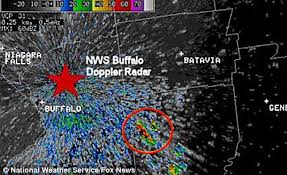by Jason Bradley, Big Government (excerpt)
So much for the argument that renewables don’t compromise our national security the way fossil fuels do – but try telling an environmentalist as much.
While it was first reported more than a year ago that wind farms were interfering with military radar, making airplanes disappear from sight on screens and cluttering those same screens with the blade-rotation changes of turbine blades, not much was said on the matter until this month, when the Department of Defense and the Natural Resources Defense Council (NRDC) proudly unveiled the Renewable Energy and Defense Database. The REDD is an interactive tool that allows renewable-energy developers to locate military installations with a view toward avoiding them in deciding where to construct future projects.

According to a Nov. 9 DoD press release, the “labor-intensive, very time-consuming project” was primarily an effort of the NRDC and didn’t cost the federal government a dime. Unfortunately, this assessment fails to take into account the hefty national security toll wind farms have already taken – and will likely continue to take unless the current premium placed on “green” energy isn’t removed.
As of 2008, wind turbines had compromised almost 40 percent of U.S. long-range radar systems (h/t masterresource.org). Here’s just one example of how: In 2007, two wind-farm projects slated for the area near Travis Air Force Base in northern California came before the county planning commission. The base and a county airport land-use body sought to have the projects delayed until turbines’ effects on radars could be further studied. But when, the following year, a project supporter donated $1 million to the base, Col. Steven Arquiette, commander of the 60th Air Mobility Wing at Travis Air Force Base, “was told by his superiors to accept the money and withdraw his complaints,” according to Masterresource.org blogger Lisa Linowes, despite the fact that nothing about the plans had changed substantially.
Now pilots coming in to Travis are urged to turn on their aircraft’s transponders as a way of announcing their presence, since they still cannot be seen on radar. This poses a sizeable security threat given that it could easily be emulated by terrorists – and has been. As Linowes notes, among the first actions the Sept. 11 perpetrators did was turn off the transponders of the planes they hijacked.
Wind farms have also dramatically slowed the Federal Aviation Administration’s review time for project proposals. While it once took a month for construction of a project to be approved or be declared hazardous, now similar projects stand to wait up to three times that long.
read … Wind Farm Follies |